Hysteresis Modeling and Micromagnetics |
|
|---|---|
Heraklion, Crete, May 19-22, 2019 |

|
Hysteresis Modeling and Micromagnetics |
|
|---|---|
Heraklion, Crete, May 19-22, 2019 |

|
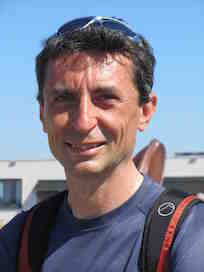 |
Vittorio Basso, Istituto Nazionale di Ricerca Metrologica, Torino, Italy. Area of expertise: Magnetism and magnetic materials. Vittorio Basso is research scientist at the Istituto Nazionale di Ricerca Metrologica in Torino, Italy. He studied physics at the University of Torino and joined IENGF (later INRIM) in 1993 where he started to work on the physics of the magnetization processes and hysteresis modeling. He is currently involved in research in the field of magnetocaloric cooling and spintronics and he is acting as responsible of the INRIM laboratory of magnetic measurements. He is coauthor of more than 130 research papers in the field of magnetism and magnetic materials. |
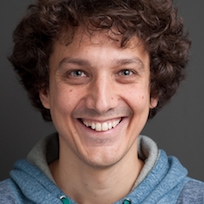 |
Bertrand Dupé, Johannes Gutenberg Universität Mainz, Institute of Physics INSPIRE Group, Germany.
Area of expertise: Density functional theory. I did my PhD in France in 2010 (École Centrale Paris) on the dielectric and magnetic properties of multiferroics thin films. Back then, I studied the different structural phases of BiFeO3 as well as there thermodynamical properties as a function of epitaxial strain. Since 2012, I am focussing on magnetic skyrmions in metals interfaces and multilayers. Especially, I am interested in their stabilization mechanisms beyond the first nearest neighbor approximation. Using atomistic spin models, I have studied their temperature and dynamical properties beyond the frozen core approximation. Since 2016, I am the group leader of the computational materials design group at the University of Mainz. |
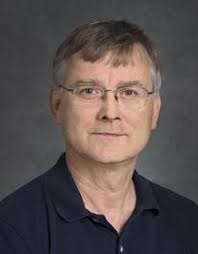 |
Peter Fischer, Materials Sciences Division, Lawrence Berkeley National Laboratory, Berkeley CA USA. Area of expertise: Development and application of advanced X-ray spectromicroscopies to novel spin textures and their dynamics. Dr. Peter Fischer received his PhD in Physics (Dr.rer.nat.) from the Technical University in Munich, Germany in 1993 on pioneering work with X-ray magnetic circular dichroism in rare earth systems and his Habilitation from the University in Würzburg, Germany in 2000 based on his pioneering work on Magnetic Soft X-ray microscopy. Since 2004 he is with the Materials Sciences Division at Lawrence Berkeley National Laboratory in Berkeley CA. He is Senior Staff Scientist and Principal Investigator in the Non-Equilibrium Magnetic Materials Program, and the current Deputy Division Director at MSD. His research program is focused on the use of polarized synchrotron radiation for the study of fundamental problems in magnetism. Since 2014 he is also Adjunct Professor for Physics at the University of California in Santa Cruz. Dr. Fischer has published more than 200 peer reviewed papers and has given over 300 invited presentations at national and international conferences. He was nominated as Distinguished Lecturer of the IEEE Magnetics Society in 2011. For his achievements of “hitting the 10nm resolution milestone with soft X-ray microscopy” he received the Klaus Halbach Award at the Advanced Light Source in 2010. Dr. Fischer is Fellow of the APS and IEEE. |
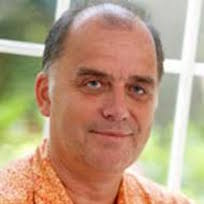 |
Konstyantyn Gusliyenko, Department of Materials Physics, University of the Basque Country, San Sebastian, Spain. Area of expertise: Magnetic vortices, domain walls, skyrmions, spin waves, small ferromagnetic particles. Kostyantyn Gusliyenko (Guslienko) received his Ph.D. at the Institute for Metal Physics, Kiev (Ukraine), in 1989. Then, he worked as scientist at the Department of Film Physics, Institute for Metal Physics and Institute for Magnetism, Kiev; at the Korea Institute for Advanced Study and at the Department of Materials Science of Seoul National University (South Korea); Seagate Research, Pittsburgh, PA, and Materials Science Division, Argonne National Laboratory, IL (USA). Now he is Ikerbasque Research professor working with the Department of Materials Physics, University of the Basque Country. His research is in the area of theory of magnetism and magnetic materials at the nanoscale (thin magnetic films, multilayers, patterned films, magnetic dots and nanoparticles). His current research interests are concentrated in the area of spin dynamics in restricted geometry, the magnetic skyrmion dynamics, spin waves and domain wall dynamics, in particular. |
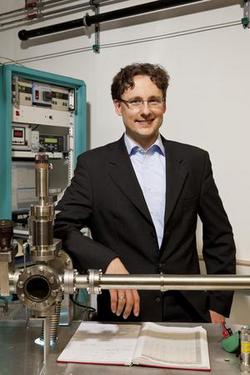 |
Mathias Kläui, Institute of Physics, Johannes Gutenberg University Mainz, Mainz, Germany. Area of expertise: Nanomagnetism and Spin Dynamics. 2011- Full Professorship at the Johannes Gutenberg-Universität Mainz 2010 - 2011 Associate Professorship in the ETH-domain (SwissFEL - PSI & ICMP EPFL) 2003 - 2008 Senior Scientist at the Universität Konstanz (Habilitation 2008) 2003 - 2005 Postdoctoral Researcher at the IBM Zurich Research Laboratory, Rüschlikon, Switzerland 2001 - 2003 PhD in Physics at the University of Cambridge, Great Britain Areas of work: domain walls, spin dynamics, skyrmions, spin transport, insulator spintronics, spin Seebeck effect. |
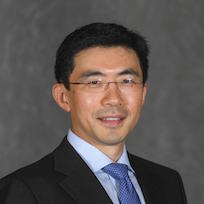 |
Kai Liu, Physics Department, Georgetown University, Washington, DC, USA Area of expertise: Experimental investigation of nanostructured materials, particularly in nanomagnetism and spintronics. Dr. Kai Liu received a Ph.D. in Physics from the Johns Hopkins University in 1998, and then carried out postdoctoral research at the University of California - San Diego. In 2001 he joined the University of California - Davis faculty. In 2018 he joined the Georgetown University as Professor of Physics and an incoming McDevitt Chair. His research interest is in experimental studies of magnetism and spin transport in nanostructured materials. He was recipient of an Alfred P. Sloan Research Fellowship (2005) and a UC Davis Chancellor’s Fellowship (2007). He is also elected Fellow of the Institute of Physics (UK), American Physical Society and IEEE. He served as the General Chair for the 61st Annual Conference on Magnetism and Magnetic Materials (2016 MMM). He currently serves as Secretary for the International Union of Pure and Applied Physics (IUPAP) Commission on Magnetism (2018-2020), and as an Associate Editor for APL Materials. |
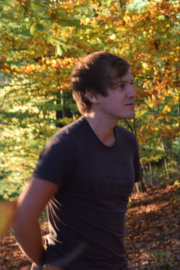 |
Jan Masell, University of Cologne, Institute for Theoretical Physics, Cologne, Germany. Area of expertise: Energetics, dynamics, and applications of topologically non-trivial textures. In February 2018 I graduated "with honors" in the group of Achim Rosch (Univeristy of Cologne, Germany) and was awarded the "Klaus Liebrecht dissertation award" of the faculty. During my time as a PhD student, I've spent a three months research internship in the lab of Vincent Cros (Unité mixte de physique CNRS/Thales, Paris, France). My main area of work is the application of the micromagnetic model to investigate the energetics and dynamics of magnetic skyrmions in various model systems. More recently, I got interested in the topological domain walls in the helical phase of chiral magnets. |
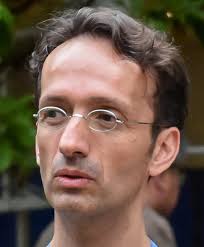 |
Christos Panagopoulos, Division of Physics and Applied Physics, Nanyang Technological University, Singapore. Area of expertise: Experimental condensed matter physics. Christos Panagopoulos received his PhD from the University of Cambridge (Trinity College) in 1997 and is currently the Inaugural Research Professor at the Nanyang Technological University and the Inaugural Investigator of the National Research Foundation, Prime Minister’s Office – Singapore. He studies quantum responses by harnessing the internal wavefunction architecture of quasiparticles (i.e., their quantum geometry) in tailor-made materials. Honours include, European Young Investigators Award, Marie Curie Excellence Grants Award, Investigatorship Award (Singapore), Invited Professor at the Venture Business Laboratory (Japan) and the Chinese Academy of Sciences, and his election as Research Fellow at Trinity College, Cambridge, the National Research Foundation (Singapore) and The Royal Society. |
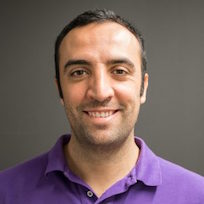 |
Daniele Pinna, Johannes Gutenberg University Mainz, Institute of Physics TWIST Group, Germany. Area of expertise: Dynamical systems, thermally activated processes, neuromorphic applications. My research focuses both on modelling the thermal phenomena affecting spintronically driven nanomagnet dynamics and assessing how it can be controlled in the design of magnetic structures to implement novel computational tasks. As an example, the scalability and easy tunability of magnetic heterostructures make them ideal candidates for constructing dense ensembles of magnetically and electrically coupled devices. Similarly, stable magnetic solitons living on extended thin films (such as skyrmions) can serve as extremely compact nonlinear elements. Both of these properties are fundamental requirements for future analog devices capable of enacting the operating principles of neural networks and reservoir computers. My work uses both numerical micromagnetic techniques and theoretical insight to grapple underlying principles of the phenomenas I study and implement valid proof-of-concepts for real world applications. |
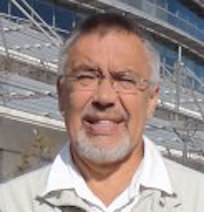 |
Andrei Slavin, Department of Physics, Oakland University, Rochester, MI, USA Area of expertise: Nonlinear dynamics in nanoscale magnetic systems. Andrei N. Slavin is Distinguished Professor and Chair of the Physics Department at the Oakland University, Michigan, USA. He received his Ph.D. in 1977 at the St. Petersburg Technical University, Russia. He joined Oakland University in 1991 following 13 years of teaching at the St. Petersburg Marine Technical University, St. Petersburg, RUSSIA. He is a specialist in linear and nonlinear spin wave dynamics in finite-size magnetic samples, and he published more that 250 research papers in this field. Andrei Slavin is Fellow of the American Physical Society and Fellow of IEEE. His current research interests are in the magnetization dynamics of nano-structures, Bose-Einstein condensation of magnons, and THz-frequency signal processing using spin waves. |